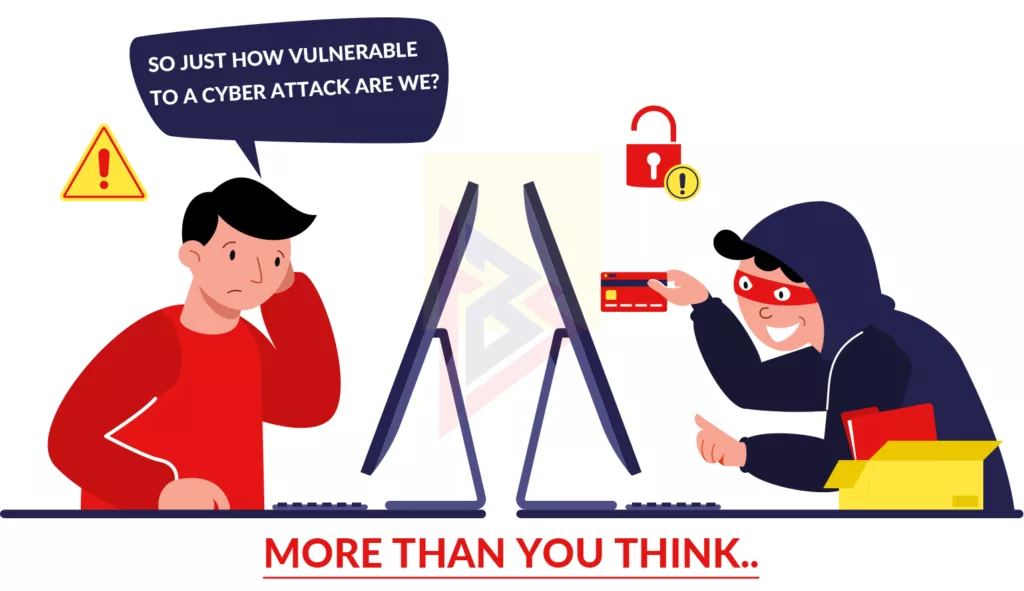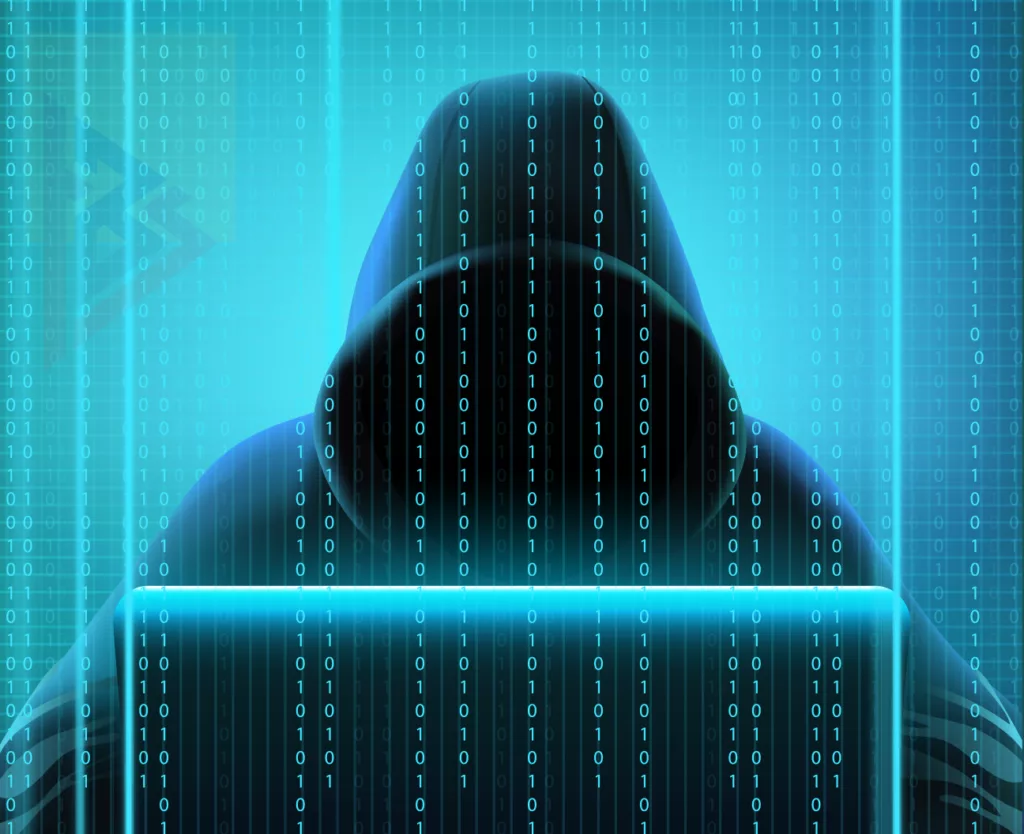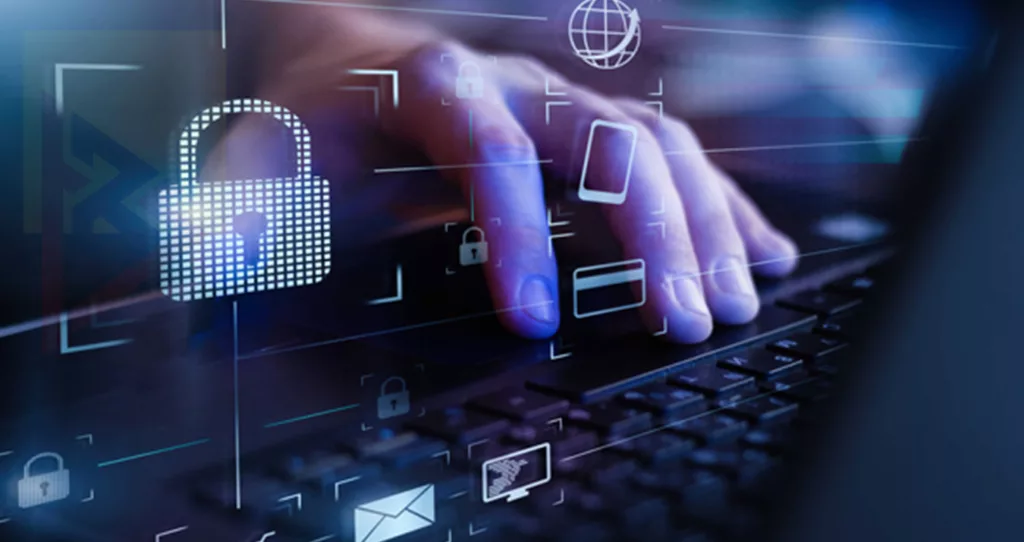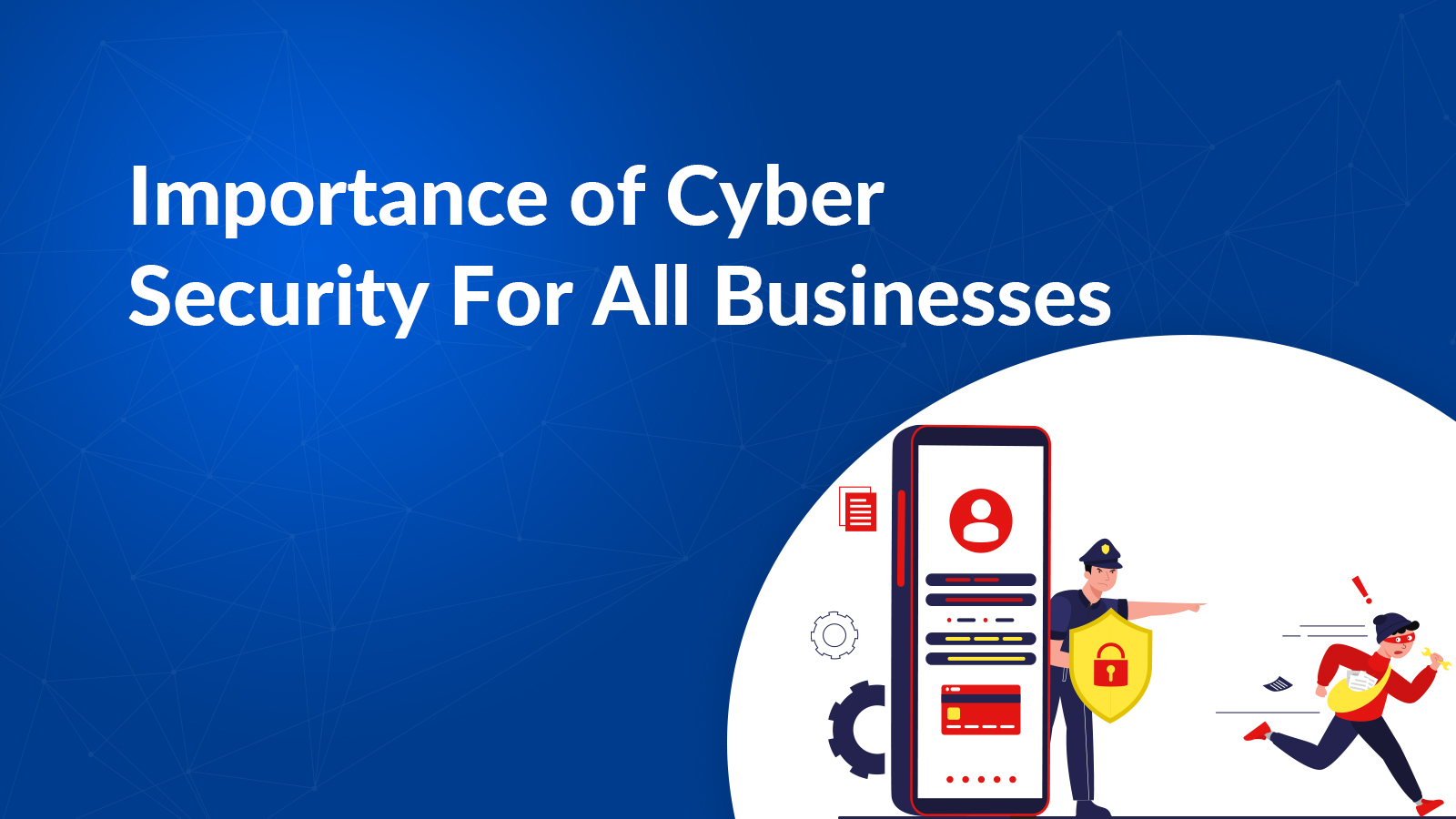The computerized world we live in today presents new threats every hour of every day. An organization connected to the Internet may be, targeted by a hacker. Organizations and governments worldwide are increasingly concerned about cybercrime and cyber risk. Without an appropriate cyber security plan, organizations are at risk of financial and reputational damage.
A ‘Cyber Security Breaches Survey 2018’ revealed that more than four in ten businesses (43%) and two in ten charities (19%) suffered a cyberattack in the UK. In the survey, 38% of small businesses reported that they had spent no money on cyber security protection.
In a separate study, a third of UK small businesses reported operating below or at the “security poverty line” risking their online safety. Sending fraudulent e-mails and impersonating organizations online were the most common types of cyber-criminal activity.
In the Internet Security and Threat Report, malicious e-mail was, found to be the most common type of cyberattack. The consequences of cybercrime can be severe. According to research conducted by the Ponemon Institute, the average cost of a data breach in 2019 is $3.92 million.
Cyber Security is a Major Managed Services Offering for Small Business
For small businesses, IT security is a crucial need, but not all of them can afford a dedicated IT department. Companies that require additional technical support to cover their business’s various aspects. Experts should be managing your firewalls, email, and endpoints to keep your business safe. They often prey on your employees by tricking them into clicking links or opening attachments that provide them with a back door into your system.
Best software, updated devices, and employee best practices are the only way to reduce the risk of a breach. You should keep your customer data, profiles, and data about your business safe regardless of your industry.
We are no longer able to rely on traditional solutions. You should outsource your technical support to protect your company and your customers. The advantages of using an IT-managed services provider include having access to top professionals round-the-clock without having to pay for full-time staff. Full-time staff is able to provide specialized knowledge and knowledge of particular areas.
Read here about the approximate cost of the development of a mobile app.
What is Cyber Security?

By ensuring the data of your organization is, protected both from internal and external attacks, you are practicing cyber security. A security system is any set of techniques, procedures, structures, and practices used to prevent unauthorized access to networks, computers, programs, or data. Cybersecurity strategies are, designed to ensure data integrity, confidentiality, and availability.
Organizations and their reputations can be, adversely affected (or even destroyed) by cybersecurity issues in several ways. Cybercriminals might gain access to sensitive information, such as credit card numbers or bank account numbers. Such information is available on the “dark web”.
Such information may be accessed by others and result in the organization’s banking or credit card facilities being withdrawn or breaching privacy laws. Globally, high-profile data breaches have been, reported monthly.
The second issue is that when hackers gain access to sensitive information regarding an organization, their reputation may suffer. Often, small organizations cannot survive the damage to their reputation that such data loss may cause. Data loss might not be as crippling as damage to reputation and goodwill.
An organization may be, subject to legal or regulatory action if customer data is, lost. In the event that a third party suffers a loss, they can sue the organization. A breach of privacy laws can also result in significant penalties and/or legal action for many organizations.
Ransomware has recently become a significant problem for organizations in terms of cyber security. There have been reports of ransomware campaigns adopting commercially oriented business models as early as 2012. It is common for malware to be, disguised and embedded within other types of documents, waiting for the target to execute it.
Upon execution, the malware can encrypt data stored within an organization with a secret 2,048-bit encryption key or communicate with a centralized command and control server to receive instructions from the adversary. The organization’s data remains inaccessible after infection due to the encryption key used by the attacker to encrypt the data.
In many instances, once the organization’s data has been, encrypted, including backup data and systems, the adversary will instruct the organization on how to pay a ransom within days, or the data will be, lost if the key is, removed. Ransomware is literally holding the data hostage.
In some cases, the target organization may be able to obtain some hope that some researchers may have discovered a way to decrypt the data based on a design flaw, rather than paying a ransom instead of cracking the encryption key. In the alternative, the organization will have to consider restoring the systems from a backup or paying the ransom. Despite the restoration of data, there is, still a risk that the ransomware will not be, reactivated or returned due to a compromised environment.
Read here, why your next app should be developed in Flutter.
Cyber security Governance

There should be, a cyber security governance and risk management program that is, tailored to the organization’s size. Business owners and directors need to consider cyber security risk as a significant risk. It should be, measured on par with compliance, operational, financial, and reputational risks, and the results monitored and managed in a similar way.
Risk assessment and related best practices can be, considered in the context of voluntary frameworks. Among the five concurrent and continuous functions of the NIST Cyber Security Framework are:
- Identify: Establish an organizational framework to manage cyber security risk in relation to systems, people, assets, data, and capabilities.
- Protect: Protect critical services by implementing appropriate safeguards.
- Detect: Identify and implement appropriate actions to identify cyber security incidents.
- Respond: Implement appropriate measures in response to a cyber security incident that has been, detected.
- Recover: Continue to prepare for resilience and implement plans in order to restore any capabilities or services that have been affected.
So, do you want to know the difference between React Native and Ionic, click here to read our blog.
The Importance of CyberSecurity
Cyber security is becoming increasingly important. Our society is increasingly dependent on technology and it does not appear that this trend will slow down anytime soon. Social media accounts now publish data leaks that could lead to identity theft. Cloud storage services like Dropbox and Google Drive now store sensitive information such as social security numbers and credit card numbers.
We all rely on computer systems every day, whether we are individuals, small businesses, or multinationals. We now have a multitude of cyber security threats that didn’t exist a few decades ago, thanks to cloud services, poor cloud security, smartphones, and the Internet of Things (IoT). Despite the similarities in skills, we need to understand the difference between cybersecurity and information security.
Cybercrimes are getting more attention from governments around the world. One example is GDPR. Data breaches in the EU have increased reputational damage by requiring:
- Data breaches should be communicated
- The appointment of a data protection officer
- Process information only with consent from the user
- To protect privacy, anonymize data
Europe is not the only region with a trend toward public disclosure. In the United States, there is no federal law overseeing data breach disclosure. However, each of the 50 states has its own data breach law. Among the similarities are:
- As soon as possible, those affected must be notified
- As soon as possible, let the government know
- Pay a fine of some kind
Data breaches in California were the first to be regulated in 2003 when the state required persons and businesses to notify affected parties “without reasonable delay” and “immediately following discovery”. Companies may be fined up to $7,500 for each victim if they are sued for up to $750.
In response, standard-setting bodies such as NIST have developed frameworks for helping organizations manage their cybersecurity risks, improve their cybersecurity measures, and prevent online attacks.
Why is Cybercrime Increasing?

Among all the types of cybercrime, information theft is the most costly and fastest-growing. This trend is in large part a result of the increasing exposure of identity information on the web through cloud services.
There are other targets as well. It is possible for industrial controls that regulate power grids and other infrastructure to be disrupted or destroyed. Furthermore, a cyberattack may aim to destabilize an organization or government by compromising data integrity (destroying or altering data).
There has been an increase in the sophistication of cybercriminals, as well as changes in what they target, how they attack organizations, and how they target different security systems.
Cyber attacks remain the most common form of social engineering, followed by ransomware, phishing, and spyware. The use of third-party and fourth-party vendors who process your data and do not adhere to cybersecurity best practices is another common attack vector, leading to the importance of vendor risk management in conjunction with third-party risk management.
As discussed in the Ninth Annual Cost of Cybercrime Study by Accenture and Ponemon Institute, the average cost of cybercrime has increased by $1.4 million to $13.0 million in the past year, and the average number of data breaches has increased by 11 percent to 145. There has never been a greater need for information risk management.
Financial information such as credit card numbers or bank account details, protected health information (PHI), personally identifiable information (PII), trade secrets, intellectual property, and other targets of industrial espionage may be compromised in a data breach. Data breaches may also be referred to as an accidental information leak, a leak in the cloud, a leak of information, or a data leakage.
Cybercrime is also driven by:
- The Internet is a distributed network
- It is extremely difficult for law enforcement to combat cybercrime when cybercriminals are able to attack targets outside their jurisdictions
- Dark web commerce becomes more profitable and easier
- There is an explosion of mobile devices and the Internet of Things.
What is the Impact of Cybercrime?
You can damage your business by neglecting cybersecurity in several ways, including:
Economic Costs
Intellectual property thefts, corporate information thefts, disruptions in trading, and damage to company systems are all potentially damaging scenarios
Reputational Cost
Poor media coverage, loss of consumer trust, and competition stealing customers
Regulatory Costs
A cybercrime may result in regulatory fines or sanctions for your organization under the GDPR or other data breach laws.
No matter how large or small your business may be, all employees should be aware of cybersecurity threats and the steps they can take to mitigate them. It should involve regular training and the development of a framework for working with that will reduce the risk of data leaks and data breaches.
The nature of cybercrime and how difficult it can be to detect makes it difficult to determine the costs of security breaches, both direct and indirect. However, this does not mean that even a small breach of data or other security incident does not have significant reputational consequences. Indeed, consumers have become more accustomed to increasingly sophisticated cybersecurity measures as time passes.
Protection from Malicious Software and External Attack

Each organization should ensure it is, prepared for a dynamic threat landscape as new threats continue to emerge. To help mitigate these malicious attacks, the following system utilities and solutions are important:
- Firewalls are software (as well as hardware) designed to protect the system from unauthorized access. They can be, installed both internally and externally.
- Using a malware/spyware protection solution or web proxy protection will protect the system from software code that may be, embedded in pop-up windows or have more insidious intentions, such as storing usernames and passwords for fraudulent use.
- Email inboxes are, protected from being, clogged by spam emails.
- The anti-phishing software protects users visiting websites that are, designed to capture information from them for use in fraudulent activities.
Using a defense-in-depth strategy, all of these measures are mandatory. There can be, substantial costs associated with an attack, including data loss, fraud, and the cost of rebuilding a system, and these costs should be, compared with those associated with defending against such threats.
The use of a reputable, well-known supplier is, highly recommended. There are some companies that purport to offer these tools, however, these tools may actually be malicious software. Free software and software obtained from unreliable vendors should be, avoided. A business’s systems integration organization (technical support) is generally responsible for the installation, configuration, and maintenance of the utilities recommended by the organization.
It is, imperative that these applications are, maintained. Every day, new malicious software is, discovered. To ensure that the system remains protected, most software vendors offer at least a daily automatic update. Care must be, taken to ensure that these updates are, properly applied.
Hardware Maintenance Plans
To ensure that hardware issues can be, quickly rectified, maintenance contracts should be, maintained with hardware suppliers. When the supplier fails to fulfill the contract, the contract should specify the service level that will be, met.
When the supplier fails to fulfill the contract, the contract should specify the service level that will be, met. Many contracts stipulate that these components should be, repaired within four hours. Individual workstations and hardware that are less critical can have longer response times.
Many organizations, particularly those in remote areas, purchase some critical components that have a high chance of failing, such as power supplies, as spare parts that can be, quickly replaced if one fails. Maintaining an adequate supply of spare components is essential for companies with maintenance contracts.
In order to ensure that the organization’s systems are, properly implemented and maintained, the organization’s external IT support company is crucial. Here are some things to consider when selecting an appropriate company:
- This includes their knowledge and experience with the organization’s operating system and hardware configuration.
- Their knowledge and experience with the software used by the organization.
- Holding certifications with major hardware and software companies that provide assurance regarding the competency of the employees within the organization.
- There must be enough people within the organization with the necessary knowledge to support the system. This is especially important if a single individual is unavailable for any reason, which can result in significant delays and costs.
- Support services can be provided remotely to enable rapid response to issues at an affordable cost.
- An organization’s expectations of a third party should be, met by ensuring that the third party is performing due diligence and managing vendor risk appropriately.
People and Documentation
In the event of a system failure, each organization should establish a plan for mitigating the risk of key employees becoming unavailable. Provide backup technicians with their contact information. Be sure to keep a record of the configuration of hardware and software applications so that a new technician can quickly recreate the system.
Policies and Procedures
It is crucial that an organization has proper IT governance procedures. Establish a formal risk assessment process and develop policies to prevent misuse of systems as well as to update policies continually to reflect the latest risk information. A potential breach can be, addressed, documented, and mitigated by developing appropriate incident response policies and procedures.
The risk management framework for an organization should include ongoing education to all employees on technology risks, with potential security breaches being, mitigated through education and policies that are, enacted. Examples of such policies are:
- User Account Management: Ensure that security incidents are, discovered in a timely manner; protect IT systems and confidential data from unauthorized access.
- Data Management: Setting up effective procedures for managing repositories, securing data, and disposing of media. Data management ensures that business data is available, accurate, and timely.
- IT Security and Risk Management: Information integrity and IT asset protection process. IT security roles and responsibilities, policies, standards, and procedures are, established and maintained during this process.
Legislation may have been, enacted in specific jurisdictions requiring the implementation of particular policies. We have compiled a list of common policies that cover computer usage, e-mail usage, internet usage, and remote access.
System Use Policy
It describes how the organization’s IT systems can be, used. Examples of elements to consider in this policy are:
- There should be a mandatory password policy on all systems, such as phones and tablets, as well as a requirement to change passwords regularly and a prohibition of revealing passwords to other team members or third parties.
- Organizational data cannot be, copied or removed from the office without approval.
- Memory/USB sticks can be, encrypted.
- Protection of equipment from physical harm.
- During business hours, use of the system is, permitted.
- You may use the system at your own discretion outside of office hours if it is, permitted.
- Multifactor authentication – Verifying the identity of users by combining more than one authentication method.
Email Use Policy
In an email use policy, the following elements should be, considered:
- Business email accounts cannot be, used for personal purposes.
- Open attachments from unknown sources (in case malicious software is, installed).
- Access to other individuals’ email accounts is, forbidden.
- Sharing passwords for email accounts is, prohibited.
- Using the organization’s email too much for personal purposes is, prohibited.
- Notification that email will be, monitored by the organization.
Internet Use Policy
The following elements should be, included in an internet use policy:
- Use of the Internet for business purposes only.
- Information about the organization’s Internet usage tracking capability.
- Interdiction of access to sites that are offensive to a person’s gender, sexual orientation, religion, nationality, or political views.
- Make sure you only download from a reputable and safe website.
- We strongly advise against downloading executables (programs), as these may contain malicious software, and we also discourage downloading pirated music, movies, or software.
- In order to limit spam, prevent the user from providing their business email address.
- Violations have consequences.
Remote Access Policy
Remote access policies should include elements such as:
- Access to external systems requires approval.
- Expenses associated with external access are, reimbursed.
- Observe security procedures (such as not disclosing passwords, disabling access to other networks while accessing the organization’s systems, using firewalls, and installing multifactor authentication to protect the remote system).
- Security of laptops and other equipment provided by an organization.
- Notifying the organization of any possible security breaches, unauthorized access, or data disclosure.
- This agreement permits the external user to be, monitored by the organization for unusual patterns of use or other suspicious activities.
- Noncompliance has consequences.
Insurance
In addition to covering the cost of replacing damaged infrastructure, insurance should cover the costs of investigating the incident, rebuilding systems, and restoring data. Consider also the possibility of a major system failure or a catastrophic event resulting in productivity loss.
Examples of CyberCrime in Companies where you would not have expected:-
Equifax
In addition to the American consumers, 400,000-44 million Britons and 19,000 Canadians were, also affected by the Equifax cybercrime.
A day after the breach, Equifax shares were, down 13% in early trading, and numerous lawsuits against the company were, filed as a result. In addition, Equifax’s reputation was, severely damaged. A settlement was, reached with Equifax and the FTC on July 22 2019 that included a $300 million fund for victim compensation, $175 million for the states and territories, and $100 million in fines.
eBay
eBay suffered a breach of encrypted passwords between February and March of 2014, which led to the company requiring all 145 million of its users to reset their passwords. The attackers accessed this trove of user data using a few employee credentials. In addition to the encrypted passwords, other personal information was, stolen, including names, email addresses, physical addresses, phone numbers, and birth dates. A month-long eBay investigation led to the disclosure of the breach in May 2014.
Adult Friend Finder
The FriendFinder Network was, hacked in October 2016 and hackers extracted 20 years’ worth of data from six databases containing names, email addresses, and passwords. Adult Friend Finder is part of the FriendFinder Network, which also includes Penthouse.com, Cams.com, iCams.com, and Stripshow.com. By the time LeakedSource.com published its analysis of the entire data set on November 14, 99% of the passwords had been, cracked thanks to the weak SHA-1 hashing algorithm.
Yahoo
One billion Yahoo accounts were, compromised by a hacker group in August 2013. Identity theft was, also risked in this case due to the compromised security questions and answers. Those affected by the breach were notified by Yahoo on December 14, 2016, and were, forced to update their passwords, as well as to reenter any unencrypted security questions and answers. Yahoo changed its estimation to 3 billion accounts in October 2017.
According to an investigation, there was no evidence of the theft of users’ passwords in clear text, payment card data, or bank information. Although this is one of the biggest data breaches of its type in history, it remains a serious concern.
These are only a few examples of high-profile data breaches, but there are plenty more that do not make the news.
How to Cyber Secure Your Organization in 2023?
Interested in identifying the most effective defense for your organization against cyberattacks? Well, all that is essential for your organization in 2021 is having a strong cyber security system and implementing the best cyber defense practices to decrease your organization’s vulnerability to cyber-attacks.
Cybercriminals won’t be able to access your company if you rely only on anti-virus software. However, educating employees on how to make smart cyber defensive choices can certainly reduce the likelihood of cyber risks!
Furthermore, cyber defense and cyber security awareness are not, required to be, taught by a specialist. To recognize and combat cyber threats, advanced technology-based tools are available today to help employees.
Attackers are constantly trying to undermine the security system of a company’s IT infrastructure today to steal its confidential data through the Web and networks. Thus, staying cyber secure is becoming more difficult. You may contact us to know your vulnerability.
To identify vulnerabilities and to track your brand online, organizations should prepare themselves with cyber security solutions like security risk assessment tools, anti-phishing, and fraud monitoring tools. A little prevention goes a long way!
How do you anticipate cyber security will evolve this year? What challenges and surprises will it bring?
Comment below and let us know what you think!
I appreciate you taking the time to read this, and hope you enjoyed reading it!









